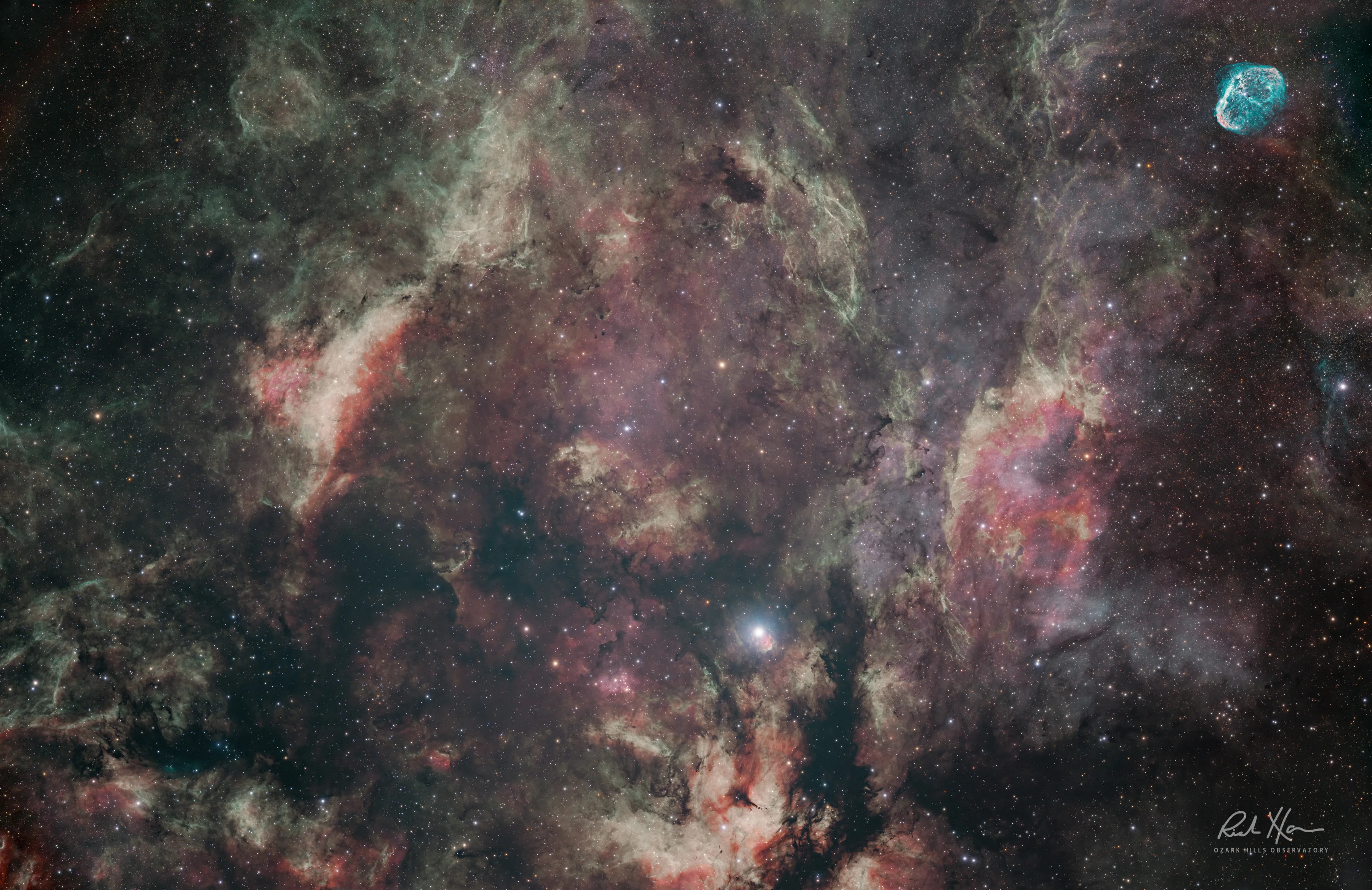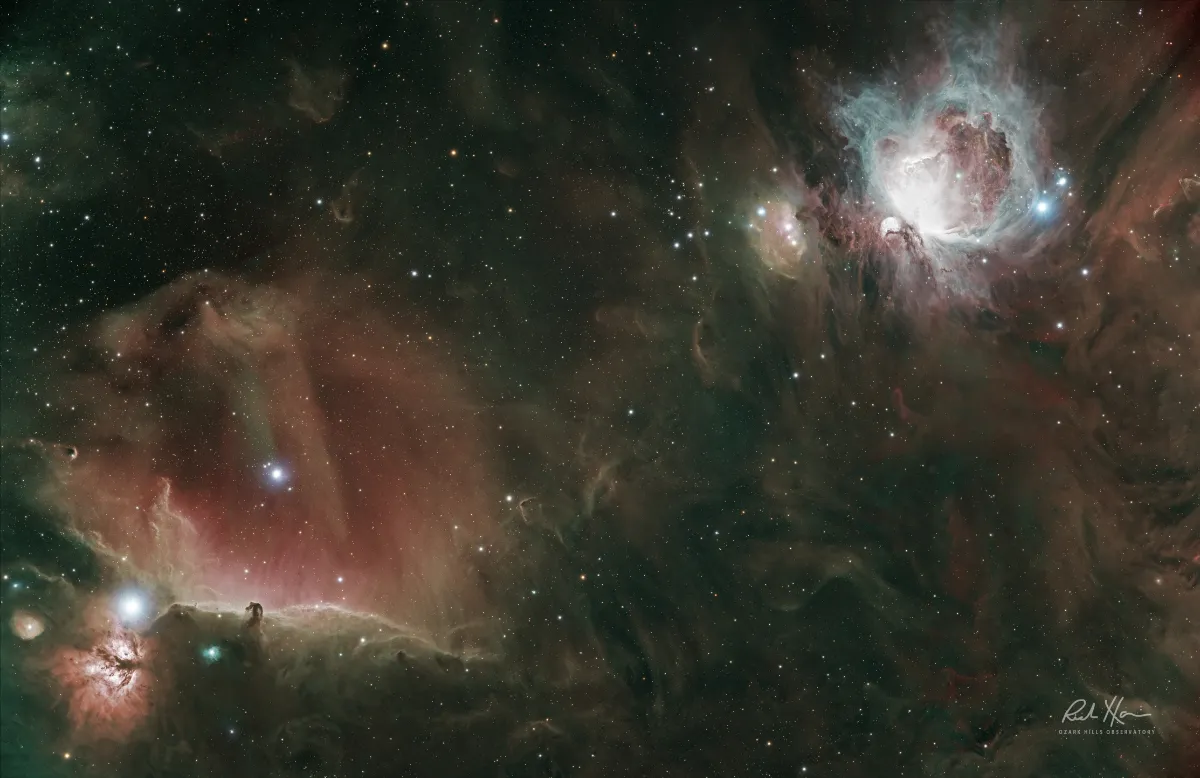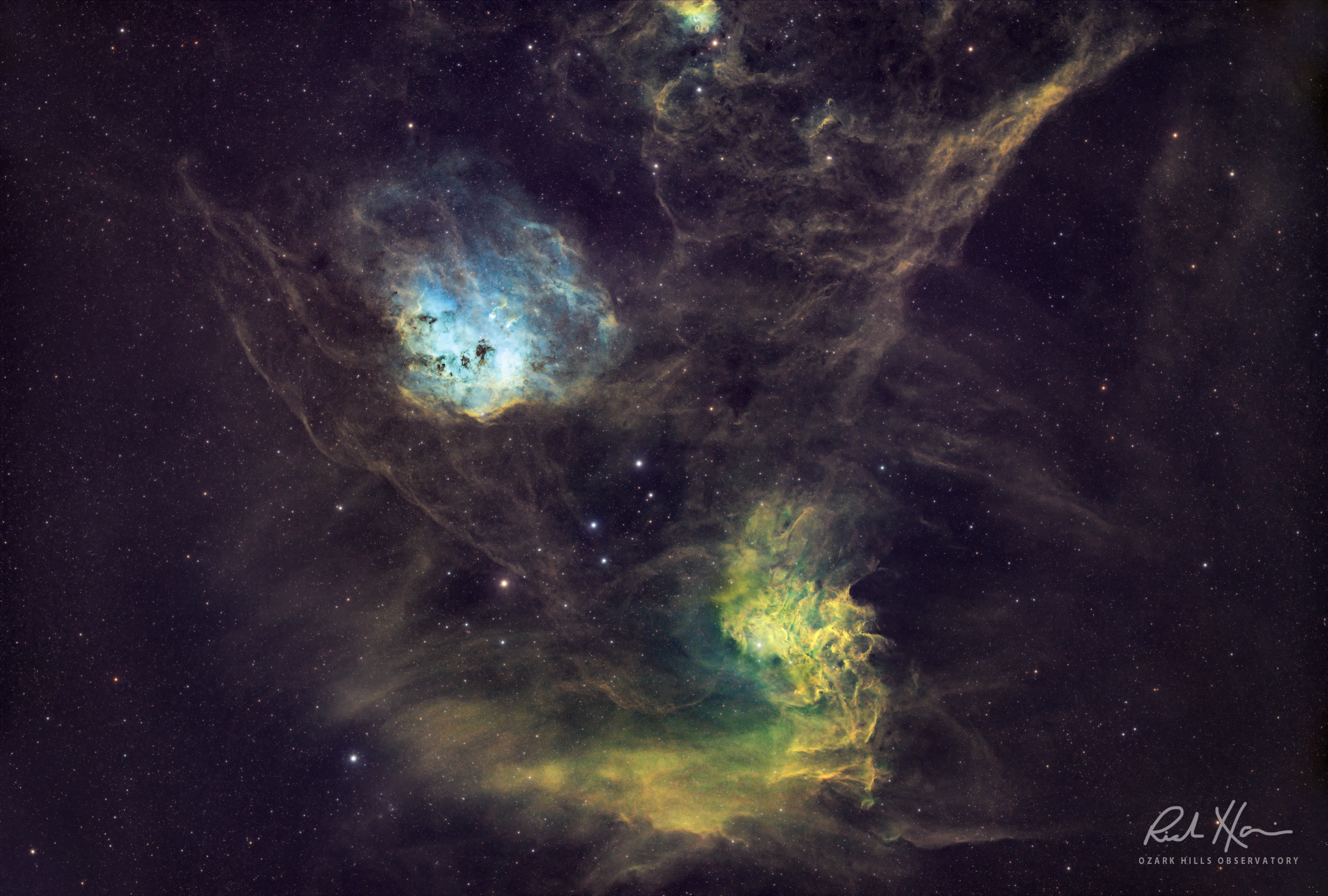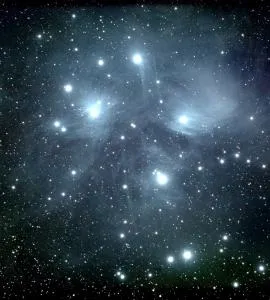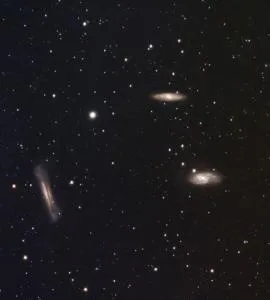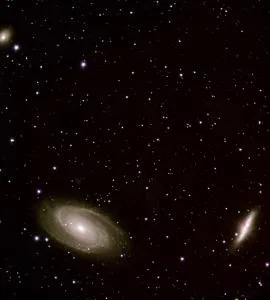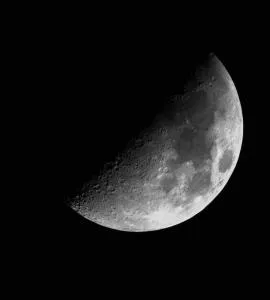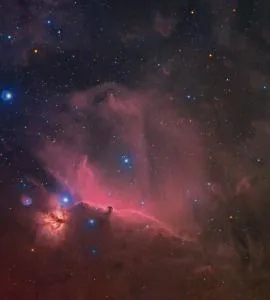Emission nebula NGC 249 astrophoto in the Small Magellanic Cloud
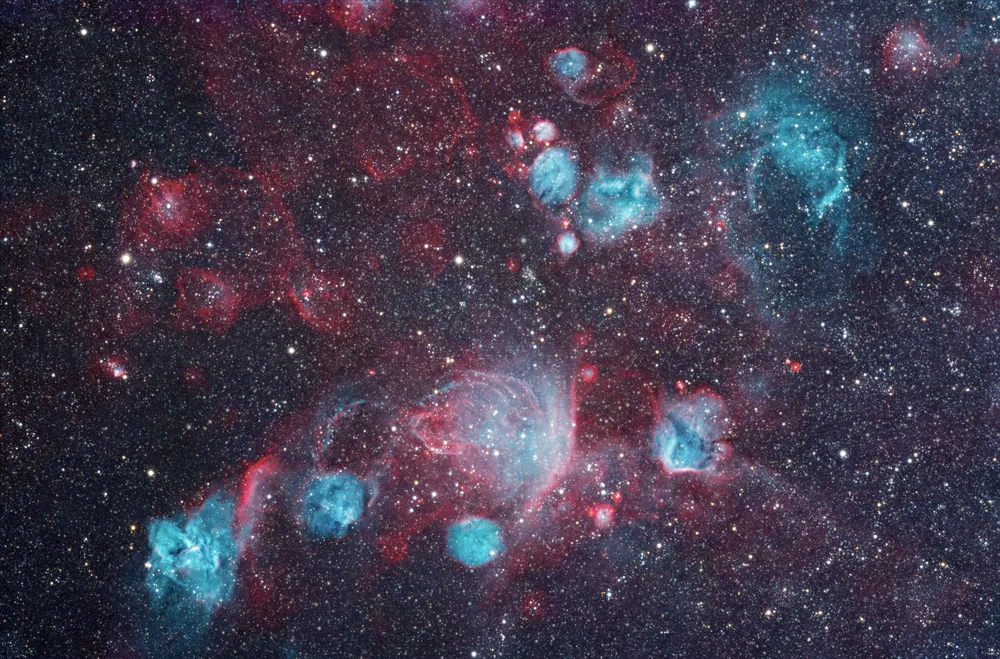
NGC 249 emmision nebula photographed by Richard Harris, a mesmerizing emission nebula nestled in the southern skies of the Tucana constellation. Discovered in 1826 by the illustrious astronomer James Dunlop.
NGC 249 is a captivating emission nebula (a cloud of high temperature gas) situated in the Tucana constellation. This astronomical marvel was first observed on September 5, 1826, by the renowned astronomer James Dunlop. NGC 249 is situated south of the celestial equator, and, as such, it is more easily visible from the southern hemisphere. Plus given its B magnitude of 13.8, NGC 249 is visible with the help of a telescope having an aperture of 14 inches (350mm) or more - an obvious choice for a CDK 24" PlaneWave observation from Chile.
As an emission nebula, NGC 249 is a region of ionized gas emitting light of various wavelengths, offering a spectacular view in the realm of deep space. Its discovery by Dunlop marks a significant moment in the study of celestial bodies, contributing to our understanding of the complex and beautiful phenomena in our universe.
NGC 249 emission nebula scientific data
Type: It is classified as a diffuse nebula or a supernova remnant. This classification indicates that NGC 249 could either be a cloud of interstellar material or the remains of a supernova explosion.
Location: This object is situated in the constellation Tucana. It is associated with the Small Magellanic Cloud (SMC), which is a dwarf galaxy near the Milky Way.
Coordinates: The right ascension of NGC 249 is 00:45:31.8, and its declination is -73:04:49. These coordinates are based on the equatorial coordinate system, which is commonly used in astronomy to pinpoint the location of celestial objects.
Magnitude: NGC 249 has a magnitude of 13.8. Magnitude is a measure of the brightness of an astronomical object as seen from Earth. The higher the number, the fainter the object.
Size: The dimension of NGC 249 is approximately 2.00 arcminutes. This measurement provides an idea of the object's apparent size when viewed from Earth.
Cross Identifications: It is also known as ESO 29-EN9, indicating its listing in other astronomical catalogs.
The discovery and observation of NGC 249 add to our understanding of nebulae and the dynamic processes in the universe. For further details, you can refer to sources like the Revised NGC Data for NGC 249 from Wolfgang Steinicke's catalog and Wikipedia's entry on NGC 249.

NGC 249 astrophoto details
Telescope: PlaneWave CDK 24”
Mount: L600 Direct Drive mount
Camera: C3-61000 Pro
Guider: ZWO ASI 174mm mini as the guide camera, off axis guided
Controller: NINA
Acquisition:
11 - 180s of LRGB each (2.2 hours)
33 - 900s - Ha (8.25 hours)
33 - 900s -OIII
(8.25 hours)
18.7 hours total time
Darks/Flats/Bias: (None)
Luminance: (None)
Processing: Pixinsight, Photoshop
Location: Chile
Bortle: 1
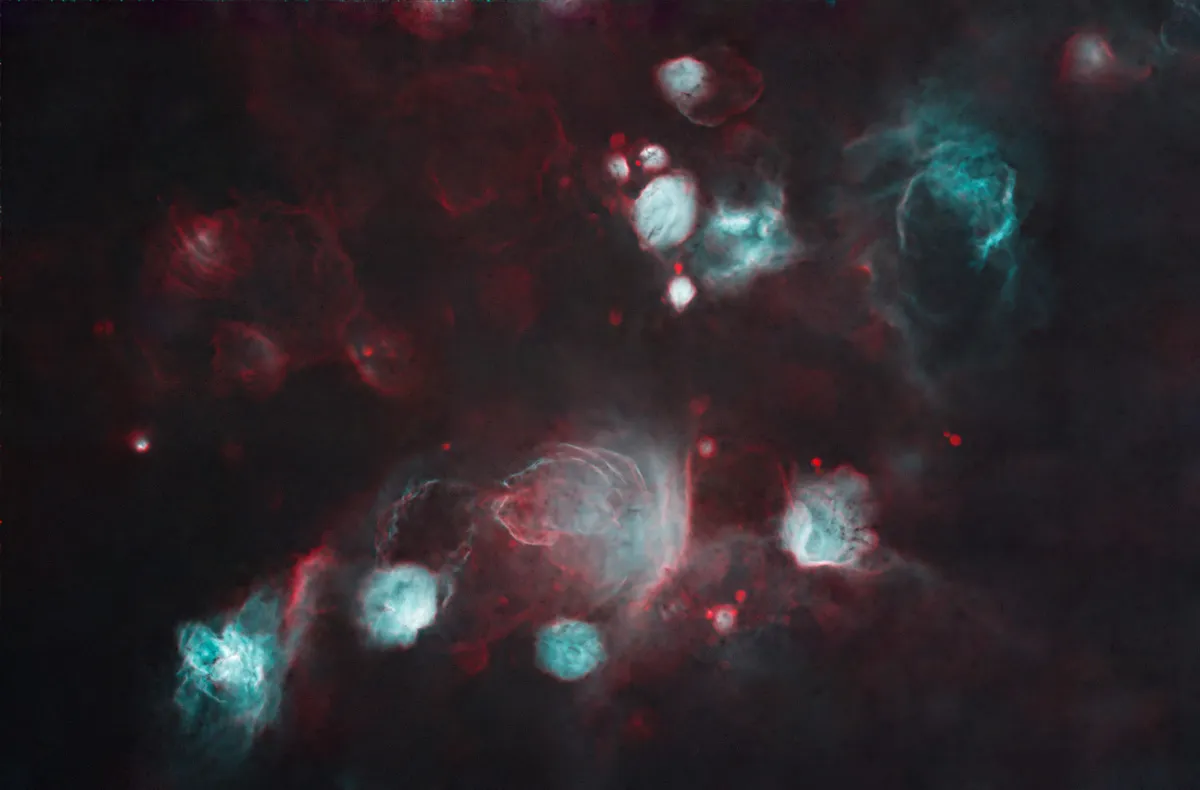
The Small Magellanic Cloud
The Small Magellanic Cloud (SMC) is a fascinating and significant celestial object in the study of astronomy. It is a dwarf galaxy that orbits the Milky Way, classified as a dwarf irregular galaxy. The SMC is known for its irregular shape, which is believed to have been a barred spiral galaxy before being disrupted by the Milky Way, resulting in its current somewhat irregular form. This disruption is evidenced by a bridge of gas connecting the Small Magellanic Cloud with the Large Magellanic Cloud (LMC), indicative of their tidal interaction.
In terms of size, the SMC spans about 15,000 light-years and contains several hundred million stars. Its total mass is approximately 7 billion solar masses. The SMC is located about 210,000 light-years away in the constellation of Tucana, making it more distant than other known Milky Way satellite galaxies like the Sagittarius Dwarf galaxy and the Large Magellanic Cloud.
The observation history of the SMC is rich and spans centuries. Indigenous inhabitants of the southern hemisphere, including South Sea islanders and Indigenous Australians, have long included the Magellanic clouds in their lore. European sailors may have first noticed the clouds in the Middle Ages, using them for navigation. The SMC was first clearly described during the circumnavigation of the Earth by Ferdinand Magellan in 1519–1522. Astronomer John Frederick William Herschel made significant observations of the SMC in the 19th century. Additionally, Harvard College Observatory played a crucial role in studying the SMC, where Henrietta Swan Leavitt's work on Cepheid variables in the SMC led to the development of the period-luminosity relation, a pivotal discovery in measuring cosmic distances.
Modern research continues to reveal more about the SMC, including its role in the study of star formation and cosmic rays. Its proximity and visibility from the Southern Hemisphere make it a valuable object for ongoing astronomical research and observation. The SMC's unique characteristics and its relationship with the Milky Way offer key insights into the dynamics of galaxies and the larger cosmic environment.

NGC 249: What exactly am I looking at here?
Imagine you're out in the countryside, looking up at the night sky. You see all those stars twinkling above. Now, some of those tiny lights aren't just single stars; they're whole galaxies, which are like vast communities of stars, dust, and gas all living together.
Small Magellanic Cloud (SMC)
This is one of our neighboring galaxies. Think of it as a small town next to our big city, the Milky Way. It's a lot smaller than our galaxy and is about 200,000 light-years away. When you look at the sky from the Southern Hemisphere, on a clear night, you might just see this faint, cloudy spot. That's the SMC. It's like a faint, distant campfire in the cosmic wilderness.
NGC 249
Now, within this small neighboring town (SMC), there's a special spot called NGC 249. It's a bit like a beautiful park in that town. Specifically, it's what astronomers call a nebula – a place where new stars are being born. So, imagine a cloud in the sky where, instead of raindrops, new stars are forming. That's NGC 249. It's a nursery for stars, glowing because of the energy from these young stars.
So, when you're out there looking up at the stars, remember, some of those tiny specks are not just stars, but entire galaxies and star nurseries, far away in the vastness of space.
About the Author

Meet Richard Harris, a passionate and dedicated astronomer who embarked on a cosmic journey at the age of 11 and has been reaching for the stars ever since. Born with an innate curiosity for the universe. Richard's fascination with astronomy ignited when he first gazed up at the night sky and felt an indescribable connection to the cosmos and creation. As a younger lad, Richard spent countless hours poring over astronomy books, studying constellations, and learning about the celestial wonders that grace our skies. In 2001, Richard invented the HyperTune telescope process, which has grown into the standard for German equatorial telescope mount tuning across the globe. He is also the founder of ScopeTrader, a global resource helping to grow the hobby of astronomy which started in 2002, and the CEO of Moonbeam software company, started in 2008. When he's not taking photos of our universe, you can find him with family, playing guitar, or traveling.
